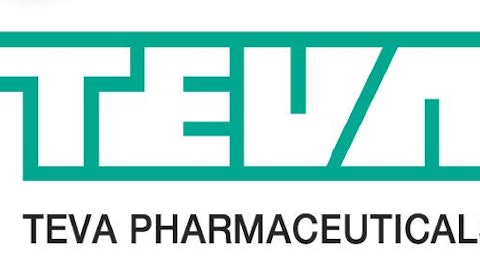Pharmaceutical companies are always looking for competitive advantages. Historically, getting a leg up on the competition has centered on identifying novel active pharmaceutical ingredients, or APIs, which are more effective than the market’s best therapies. While that is still the overwhelming focus of the industry, companies are beginning to invest heavily in novel manufacturing capabilities that often go unnoticed by investors. One relatively new technology being explored is the use of highly optimized biocatalysts, or enzymes and microorganisms that accelerate chemical reactions.
Nature uses enzymes to efficiently create and synthesize chemicals. Why shouldn’t modern society do the same?
A process that utilizes biocatalysts can take less time, energy, equipment, and resources to complete and result in enhanced production metrics and less waste overall. The goal is to make APIs easier to isolate, purer, and cheaper. Think the advantages are overstated? Consider first how biocatalysts are designed around the process along with several real-world case studies.
Wanted: More efficient manufacturing process
Who manufactures biocatalysts? Chemical behemoth BASF (OTCBB:BASFY) is among the handful of companies utilizing a directed evolution technology platform that engineers enzymes and metabolic pathways of microorganisms. The platforms are effectively squeezing tens of thousands of years (or more) of evolution into a period of several months by nudging enzymes into optimized structures for a given process. That is powerful. So powerful, in fact, that the world’s largest chemical company opened its third pharmaceutical enzyme manufacturing line in India (after Italy and the United States) this summer.
There is plenty of work ahead and the platforms are far from perfect, but the field has enormous value-adding potential. One estimate thinks that disrupting small molecule and biologic manufacturing represents an estimated annual market opportunity of $5 billion. That is a lot of money to go around to just a few well-established biocatalysis companies, which also includes Novozymes from Novo Nordisk and Genencor from DuPont. It is also just one area of the complete picture for optimized industrial enzymes that can also revolutionize chemical production, fuels, animal feed, textiles, wastewater treatment — you get the point.
Prove it!
There are dozens of pharmaceutical companies and universities around the world working with BASF to incorporate optimized enzymes into their manufacturing processes. The success of the following case studies probably has a lot to do with the industry’s increased appetite for biocatalysts:
Merck & Co., Inc. (NYSE:MRK), Januvia (sitagliptin)
The oral type 2 diabetes drug raked in $5.75 billion in 2012 — crushing the injectable in-class competition. It has gotten off to a slow start in 2013, but is still one of the best-selling drugs on the market. The prior process required five total steps, three separate isolation steps, specialized equipment, and toxic catalysts. It also sported an overall yield of just 74%.
Merck & Co., Inc. (NYSE:MRK) and Codexis redeveloped the process with biocatalysts with amazing results. Sitagliptin is now produced in just two steps, with an 87% overall yield, 30% higher productivity, 19% less waste, and without the need for specialized equipment. The rework took nine months, screened 36,480 catalysts before finding the perfect match, and increased reactivity 25,000-fold from the base catalyst. The pair won the prestigious U.S. EPA Presidential Green Chemistry Challenge Award in 2010 for their process.
Novartis AG (ADR) (NYSE:NVS), Exelon (rivastigmine)
Exelon became the first globally approved treatment for dementia due to Parkinson’s disease in 2006, so manufacturing plays a crucial role in maintaining a stable supply of the drug. Novartis AG (ADR) (NYSE:NVS) also worked with Codexis to improve the process’s stability in high temperatures by over 24-fold, maintained crucial process parameters, and increased process activity from less than 5% conversion to greater than 95% conversion.
There are risks to consider, namely that not every drug gets approved. Biocatalysts are still a relatively new manufacturing tool, but there is serious momentum behind the idea. If you still don’t think the growth in biocatalysts is real, consider their use in major pharmaceutical trials in 2010:

Source: Codexis Corporate Overview May 2013.



